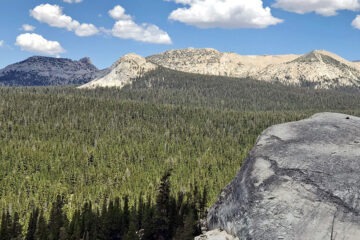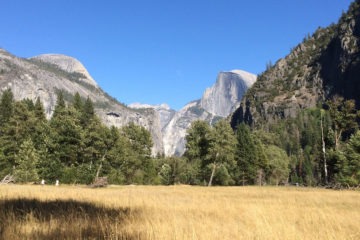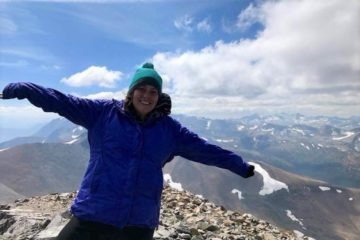Pete Devine is a longtime Yosemite dweller and the Conservancy’s resident naturalist. When not studying the fascinating world around him, Pete conducts outings in the park as one of our talented leaders—you can join them to photograph autumn scenery, snowshoe among sequoias, backpack to remote peaks and passes, and much more.
In the meantime, Pete offers insights into the park’s golden season, when the Sierra Nevada truly reflects its nickname: Range of Light.
“On one of the yellow days of October, 1871, when I was among the mountains …”
So starts John Muir’s 1872 article “Living Glaciers of California.” Right now, nearly a century and a half later, anyone can appreciate that we’ve arrived at those autumnal “yellow days,” the time of year with the most remarkable light in Yosemite Valley.
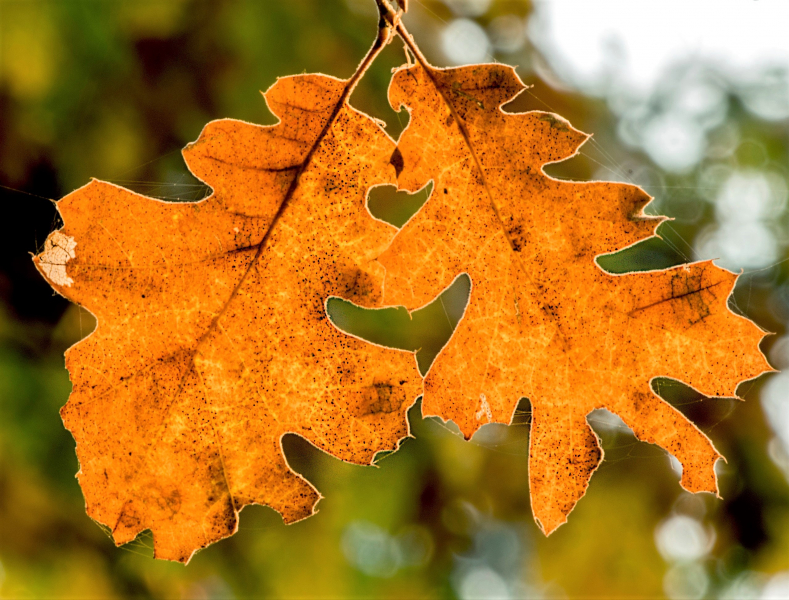 Though the days are short and the sun is shifting southward, there is more lightness in the Valley than in summer. Only a new winter snow results in greater albedo (reflectivity) than what we see in autumn.
Though the days are short and the sun is shifting southward, there is more lightness in the Valley than in summer. Only a new winter snow results in greater albedo (reflectivity) than what we see in autumn.
Why is it brighter now than in the baking days after summer solstice? Largely because the vegetation has paled: Meadows are straw instead of green grass. The dark green hues of chlorophyll have faded from deciduous trees, allowing other pigments to take center stage, such as yellow xanthophylls and reddish anthocyanins. Oak, maple, willow and cottonwood leaves go yellow, as do smaller plants like grape and dogbane. Dogwoods turn red, rose or pink. Pale leaves that have dropped to the ground add yet more light over dark.
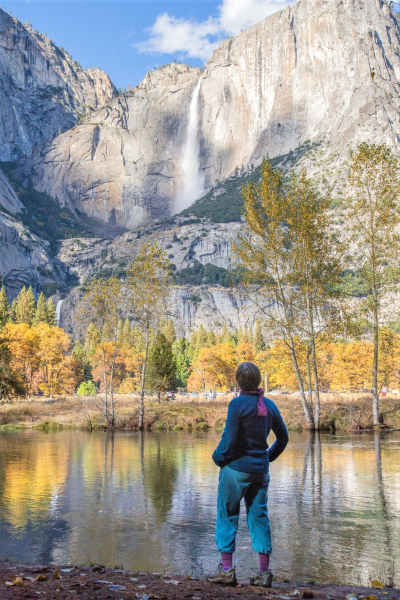 The low angle of the sun lengthens shadows and dims the granite on the south wall of Yosemite Valley, home to Bridalveil Fall, but brightens the north side, where you’ll find El Capitan and Yosemite Falls, by better illuminating pockets that are dark in the summer, when sunlight beams from overhead.
The low angle of the sun lengthens shadows and dims the granite on the south wall of Yosemite Valley, home to Bridalveil Fall, but brightens the north side, where you’ll find El Capitan and Yosemite Falls, by better illuminating pockets that are dark in the summer, when sunlight beams from overhead.
The water in the Valley is shifting, too. Because of last winter’s vigorous storm series, the Merced River has maintained an average flow of at least double the norm all season, and Yosemite Falls was worth photographing even months after the last snow fell in its watershed. While the river and waterfalls have ebbed over the summer, a gradual return of Pacific storms will slowly bring some recharge.
This is also the time of year when spiders take to the air, embarking on a phenomenon called ballooning (though I think kiting is a better description). Though wingless, spiders have an ingenious, graceful way of “flying” to new places: They climb to an exposed spot, release a long streamer of silk, and then let the wind loft and waft them through the air — sometimes for miles. If you peer up into the sky with a pair of binoculars, you’ll see spider silk (and lots of other aerial plankton) drifting above. If you look down, you might find clumps of former kiting matter scattered on the ground, the fallen tangles of white silk that became too heavy to float or dropped when the canyon updrafts tapered off.
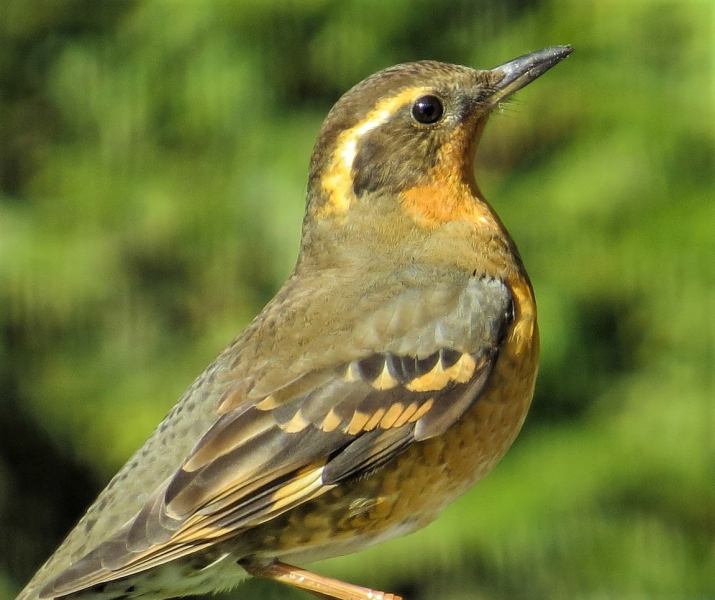 Also overhead: birds! The first varied thrushes (Ixoreus naevius) of the year have shown up in Yosemite Valley. Their odd wheeze is a subtle sign of fall, marking the arrival of a bird we don’t see here all summer. Unlike most of Yosemite’s migratory birds, which head south before the cold sets in, this species moves to the Sierra for the winter from its nesting latitudes further north. If you see a bird that makes a raspy whistle and looks like a robin with fancy, striped plumage, you’ve found the varied thrush.
Also overhead: birds! The first varied thrushes (Ixoreus naevius) of the year have shown up in Yosemite Valley. Their odd wheeze is a subtle sign of fall, marking the arrival of a bird we don’t see here all summer. Unlike most of Yosemite’s migratory birds, which head south before the cold sets in, this species moves to the Sierra for the winter from its nesting latitudes further north. If you see a bird that makes a raspy whistle and looks like a robin with fancy, striped plumage, you’ve found the varied thrush.
Snow has already laced Yosemite’s highest summits, and will gradually reach lower over the next few months. While Muir’s reflections on autumn light have held true over the years, his opening line from an 1872 piece has become less relatable: “Winter has taken Yosemite, and we are snowbound.”
Since Muir’s time, and even since my early years in the park, the snow line (the elevation where rain turns to snow) has shifted up the Sierra slopes. The area of Yosemite that ends up blanketed in bright white each season is shrinking, as a warming climate leads to more winter precipitation falling as rain instead of snow. That shift has consequences for natural habitats, for plants and animals, and for us.
In Yosemite, you can’t help but notice nature’s changes: green leaves turning golden; wildlife emerging, hibernating and migrating; precipitation patterns shifting. Such observations remind us that Earth is a dynamic, responsive place, one that our actions can harm or sustain. We play a critical role in ensuring the long-term health of our shared home.
As we await bright, golden autumn’s transition to a winter lit with snow, here’s hoping for a bright future for our park and planet.
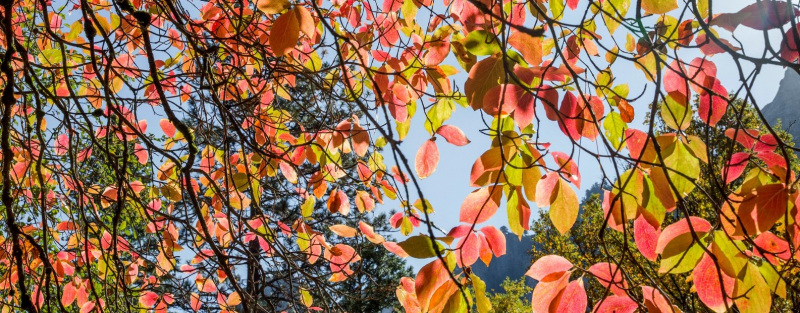
To learn more from Pete and our other naturalists, sign up for one of our scheduled outings in Yosemite, or contact us to create your own guided adventure. When you join us for a snowshoe hike, backpacking trek, bird-watching walk or other experience, you’ll be making your miles count: Proceeds from all of our Outdoor and Custom Adventure programs support important work in the park!
Main image: Yosemite Conservancy/Keith Walklet

